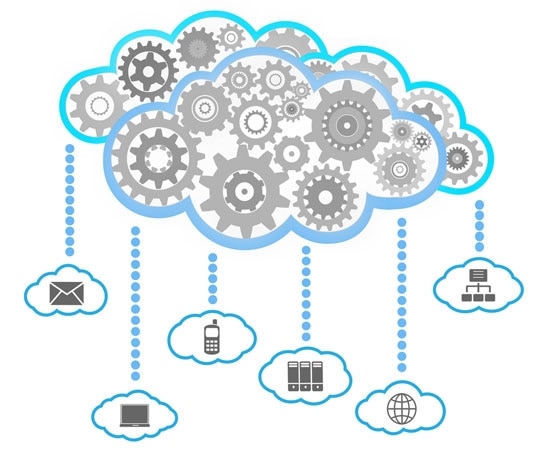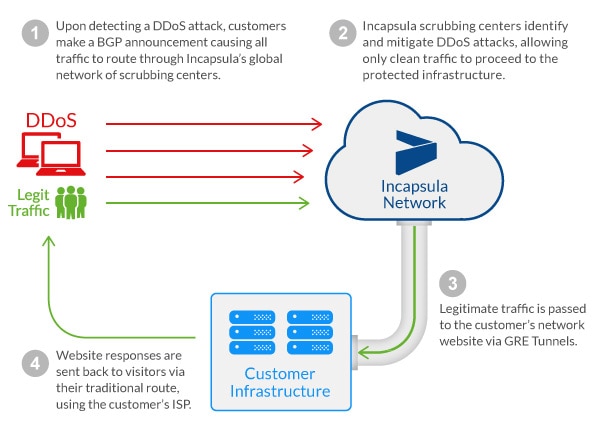Akamai’s state of the Internet
Akamai’s annual report shows a specific view on today’s online trends – DDoS attacks, Internet Connection Speed and Situational performance, disruptions and events. Here’s the summary of their findings:
Industry’s DDoS attacks trends in 2013
During the fourth quarter of 2013. Akamai observed attack traffic originating from 188 unique regions, up three from the third quarter. China remained squarely in first place, responsible for 43% of observed attacks, more than double the percentage seen in the US. The Asia Pacific region holds 56% of observed attacks and continues to traffic more attacks than any other region. Akamai combats these attacks by serving the traffic for the customer while the analysis is being performed, and creating specific Web Application Firewall (WAF) rules or implementing other protections such as blocking sprecific regions IP adress ranges as necessary.
How One AI-Driven Media Platform Cut EBS Costs for AWS ASGs by 48%

In total, 177 organisations faced repeated attacks in 2013. Nearly half of them, 85 only suffered a second attack, but 69 faced three-to-five attacks each, 10 faced six-to-ten attacks, 12 dealt between 11 and 20 attacks throught the year. and one organisation was attackd nearly every other day throught the entire year.
It’s clear from the top-level domains of the sites that the attackers were not only interested in .com Web sites, but also targeted government and military Web properties.
Global average connection speeds
The global average connection speed ended the year with another increase, reaching 3.8 Mbps in the fourth quarter with 5.5% quarterly growth. Globally, a total of 78 qualifying countries/regions saw average connection speeds grow in the fourth quarter, ranging from an increase of just 0.2% in brasil to a 50% increase in Kenya. Long-term trends remained extremely positive among the top 10 in the fourth quarter.
US average connection speeds – the fourth quarter of 2013 saw minor changes among the top 10 states, with Virginia having the highest connection speed. Increasing by 2.0% , the average connection speed in the US reached 10.0 Mbps.
As far as the Asian region goes, Japan, Hong Kong and South Korea continue to have the highest connection speeds, with Korea having having an average connection speed of 20 Mbps. Looking at year-over-year changes, all of the surveyed countries/regions experienced growth above 10%.
The highest ranking connection speed country in Europe is Netherlands, with 12.4 Mbps, followed by Switzerland and the Czech Republic. In November, Swisscom announced that a 1 Gbps subscription tier is available for over 650 000 residential customers at a price of $115 USD per month.
Mobile connectivity
Russian mobile provider RU-1 maintained it’s No. 1 position with the speed of 8.9 Mbps, while USA‘s US-4 holds the second place with the speed of 8.5 Mbps. The usage of mobile browsers has increased greatly in 2013, showing a significant gap between the usage of Apple Mobile Safari and Android Webkit. The number of mobile data subscriptions is increasing rapidly and driving growth in data traffic.
You can download the full report here.
Internap declares the general availibility of it’s OpenStack powered public cloud
Internap Network Services Corporation, the provider of scalable and flexible IT infrastructure and cloud offerings, announced the general availibility of it’s OpenStack powered AgileCLOUD offering. The offering will be among the first public cloud solutions included in the OpenStack Marketplace. The AgileCLOUD solution comes with multiple server performance tiers and custom configuration to enable customers to reach the maximum of the potential needed. The solution leverages Internap’s cloud network optimisaition, performance IP and patented Managed Internet Route Optimisator to incsure optimal performance and connection speed.
5 predictions on the future of cloud computing
These are the top 5 predctions that might come true in the coming years of cloud;

- More application availability on the cloud
It’s predicted that by 2016, over a quarter of all applications (48 million) will be available on the cloud. 56% of enterprises consider cloud to be a strategic differentiator, and approximately 58% of enterprises spend more than 10 percent of their annual budgets on cloud services. - Increased growth in the market for cloud
Gartner’s forecast expects cloud’s adoption to hit $250 billion by 2017. In the fourth quarter of 2013, we saw a glympse of that predicton come true – enterprises were increasingly relying on cloud to develop, market and sell products, manage supply chains and more. - More hybrid cloud adoption
50 percent of enterprises will have hybrid clouds by 2017. The hybrid cloud—a mix of on and off premises—offers the best of both worlds: a combination of strengths allowing organizations to achieve the performance of on-premises solutions yet also the management convenience of the cloud business model. - Increased development for the cloud
There are more than 18 million software developers worldwide yet less than 25 percent are developing for the cloud today. We can expect that as cloud continues to be adopted, more developers will develop for the cloud. - More innovation because of cloud
Increased competition in the cloud space will give way to better products, services and innovation. Simple as that.
For the full article, visit Thoughtsoncloud.
DDoS Mitigation from Incapsula – New DNS and Infrastructure Protection
The rate at which the DNS DDoS attacks are evolving now threatens even the most resilient DNS services. This is where Incapsula’s ‘DNS Protection’ comes into play. Users can manually enforce DNS cache freshness by electing to refresh all cached data or by selectively refreshing cache for specific DNS records.

With ‘Infrastructure Protection’ Incapsula can extend their DDoS protection to entire subnets, securing FTP and email servers and mitigating direct-to-origin attacks, as well as other direct attacks on crucial components of their clients’ infrastructures. ‘Infrastructure Protection’ is offered as a non-intrusive solution, which can be activated on demand, in a matter of seconds.
Check out the full report at Incapsula website.






